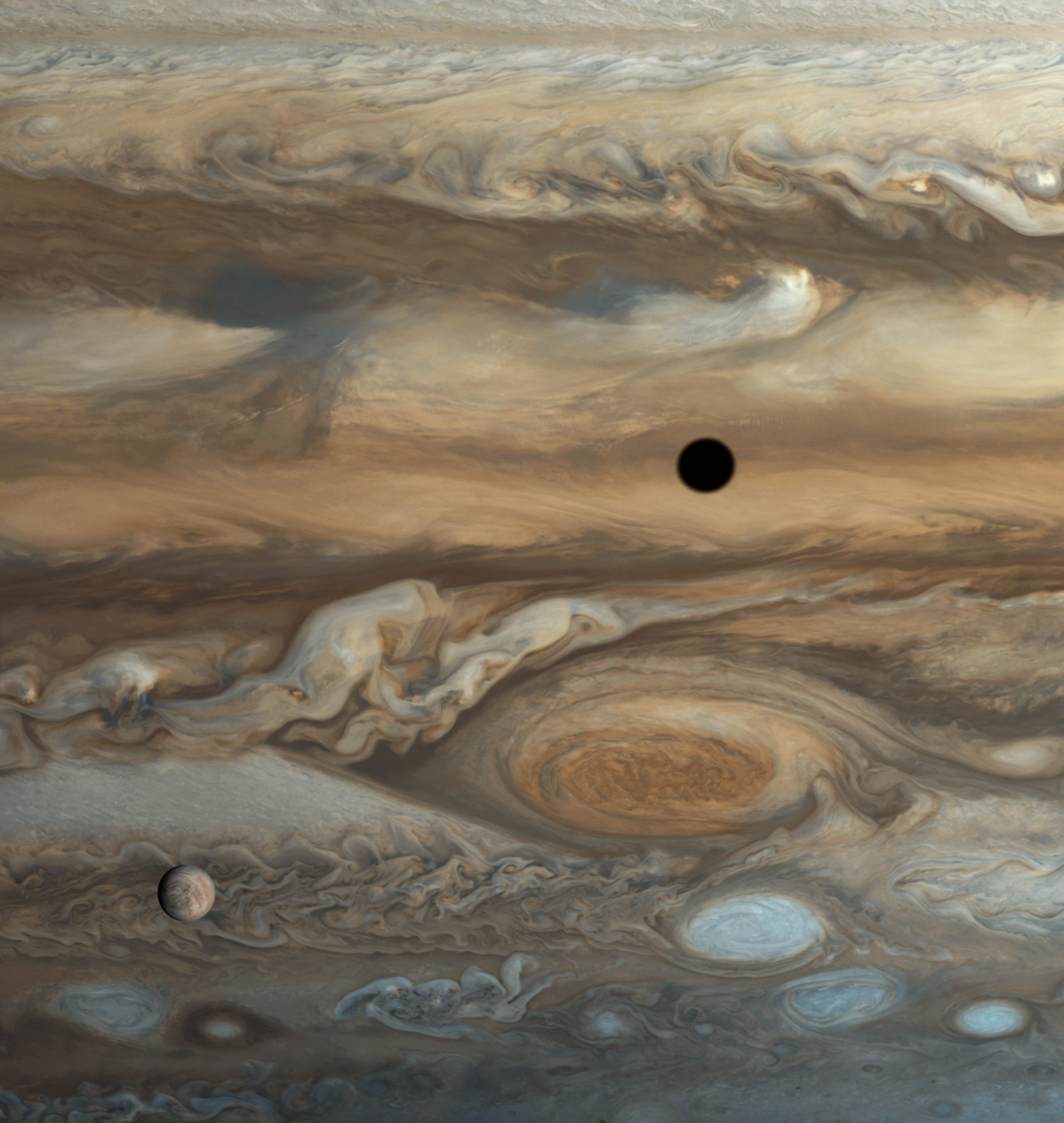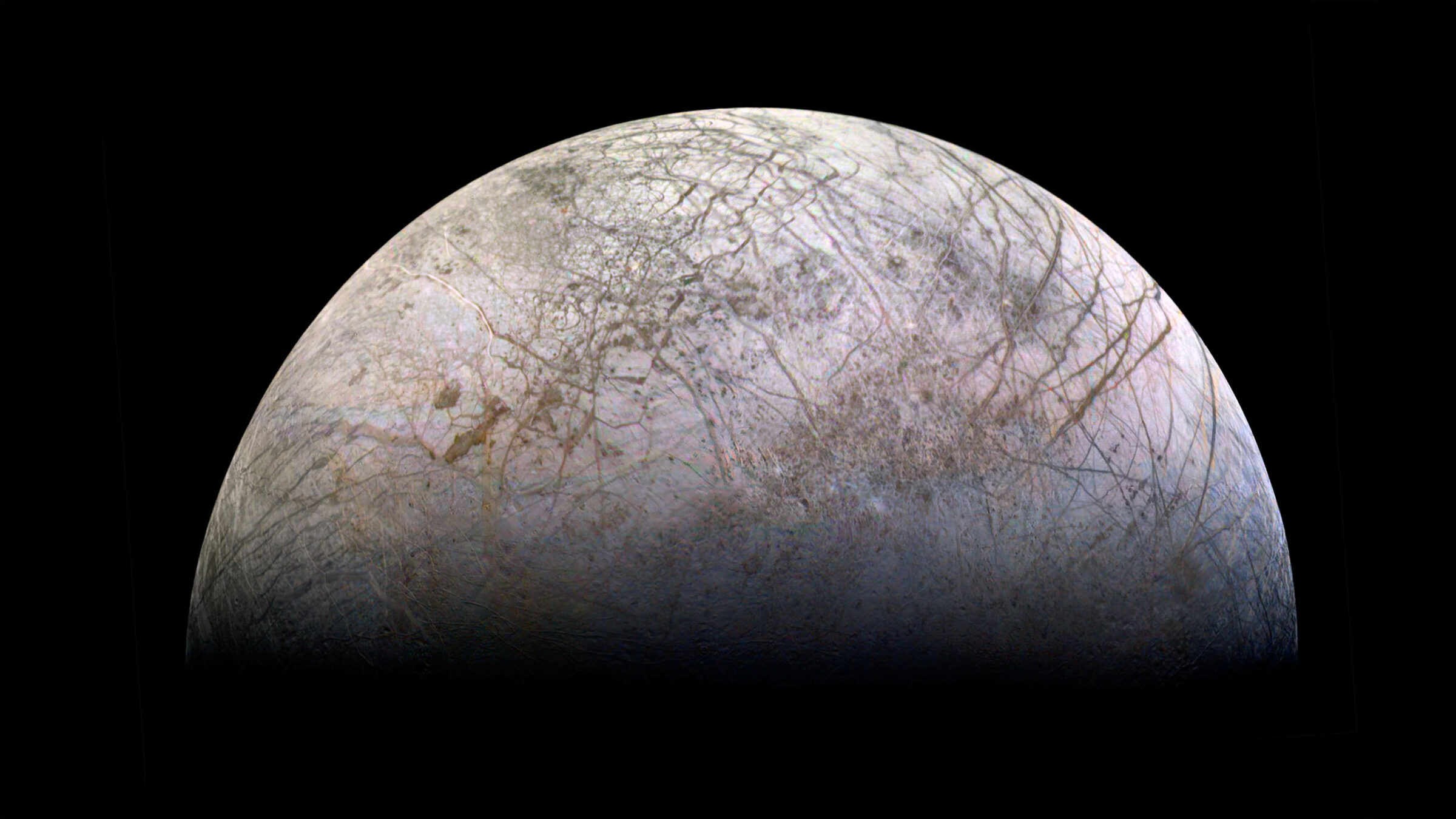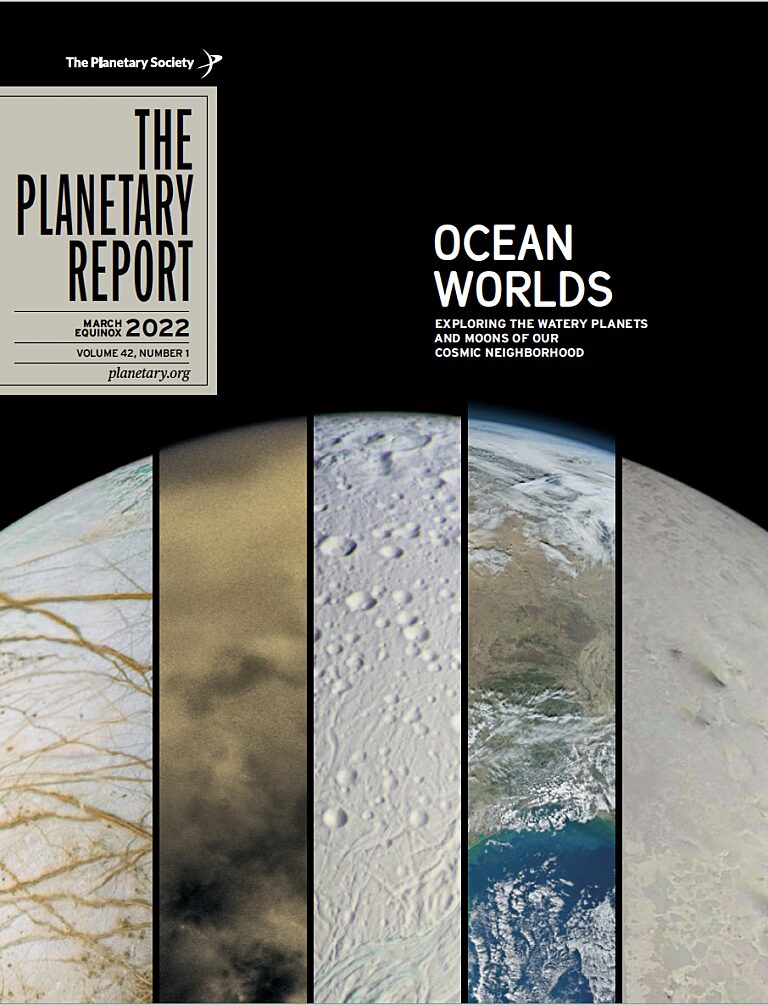A fascination with Europa

They say you should never judge a book by its cover. In planetary science, it’s sometimes best to waive this rule of thumb. Surface features of planetary bodies can give us important hints about what’s happening inside a world. In the case of Jupiter’s moon Europa, what we saw on the surface opened whole new realms of possibility in the search for life.
When NASA’s twin Voyager spacecraft passed through the Jupiter system in 1979, they sent back the first detailed images of the icy moon. These photos showed an unusually smooth surface, suggesting that some process was reworking the icy crust to erase craters and keep the surface young. The images also showed darker stripes crisscrossing the surface along with circular and elliptical lenticulae (Latin for “freckles”) dotting the ice. These superficial observations hinted at something monumental: the possibility of a layer of liquid water beneath the surface.
Scientists had already predicted that Jupiter’s moon Io might have molten rock beneath its surface because of how Jupiter and its other large moons gravitationally squeeze Io as it makes its way around its host planet. The images of Io that Voyager 1 and 2 sent home showed volcanic activity across the surface, proving that there was indeed a layer of magma beneath its yellowish outer shell.
Though the potential of lava was indeed exciting, much more important was the possibility that this same gravitational squeezing might melt the interior of an icy moon like Europa. When the Voyager probes sent back images of a smooth surface covered in cracks and freckles, the implication was clear: Features like this are caused by tectonic activity. When a solid crust floats on top of a liquid layer, it causes the crust to move, split and constantly resurface itself. Whereas on a rocky moon like Io the liquid layer is molten rock, on icy Europa, the liquid layer is molten ice — in other words, water.

This discovery opened the possibility that life beyond Earth could exist in the frigid far reaches of the solar system. The search for life generally focuses on looking for liquid water, which is an essential requirement for life as we know it. At Jupiter’s distance from the Sun, temperatures are so low that water takes the form of ice as hard as granite. The expectation is that life would therefore not be able to exist in these conditions. But the tidal forces that squeeze and heat Europa’s interior change the game and in doing so dramatically expand the range of where we might find life.
Further observations by spacecraft, like NASA’s Galileo mission, added to our understanding of Europa’s subsurface oceans. New discoveries reinforced the possibility that life could theoretically exist in Europa’s waters, making this little world all the more important to the search for life. And as you’ll read in this issue of The Planetary Report, Europa is not the only world that hides liquid water beneath its surface. Enceladus, Ganymede, Titan and even distant Triton all show signs of subsurface oceans.
The first detailed images of Europa that the Voyager missions sent back were the beginning of an exciting era of planetary science that continues to yield discoveries and intrigue scientists to this day. Future missions, like Europa Clipper, will help uncover more of these ocean worlds’ secrets. And with so much yet to learn, we’re still only scratching the surface.
Support our core enterprises
Your support powers our mission to explore worlds, find life, and defend Earth. You make all the difference when you make a gift. Give today!
DonateThe Planetary Report • March Equinox
Help advance space science and exploration! Become a member of The Planetary Society and you'll receive the full PDF and print versions of The Planetary Report.


 Explore Worlds
Explore Worlds Find Life
Find Life Defend Earth
Defend Earth


